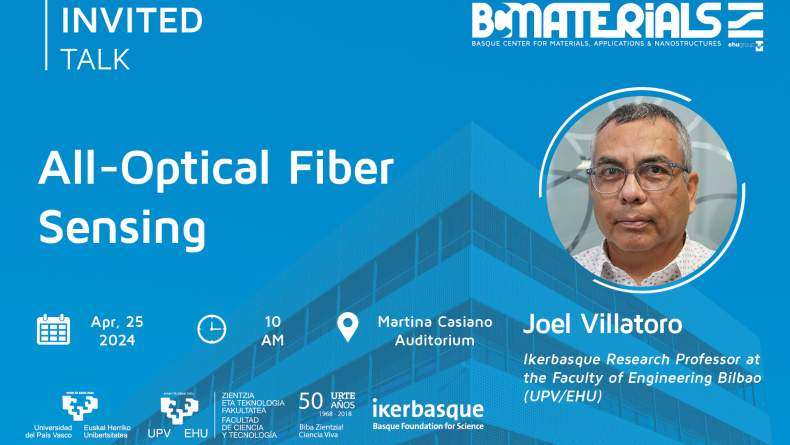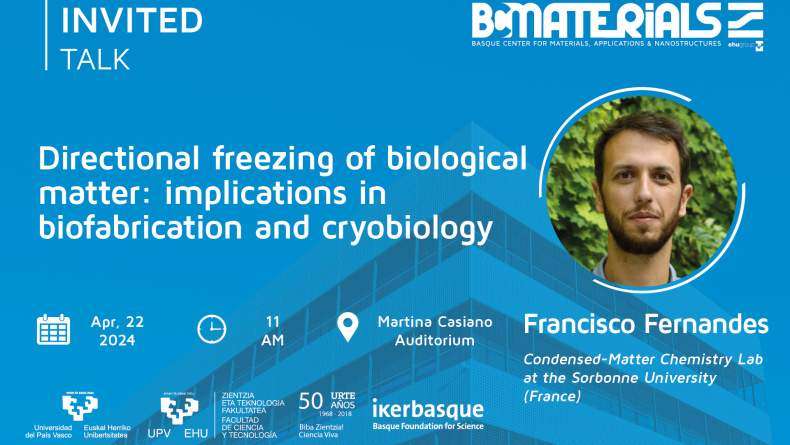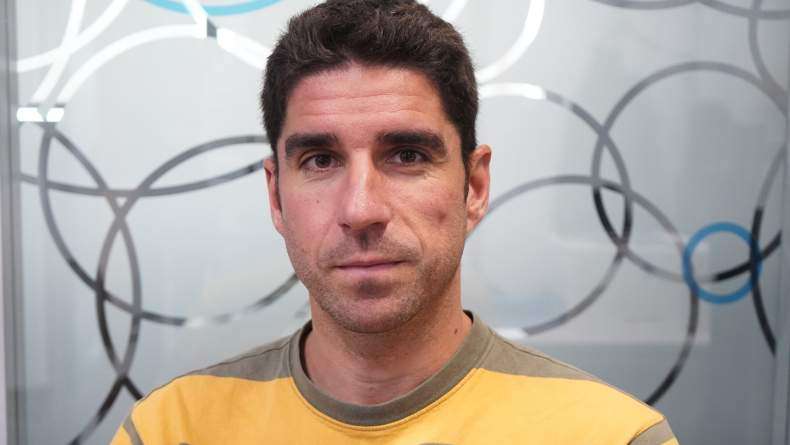BCMaterials Fortnightly Seminars #37

PEDRO COSTA
(Universidade do Minho)
ELASTOMER BASED COMPOSITES AS HIGHLY STRETCHABLE MATERIALS FOR SENSOR, ACTUATOR AND ENERGY GENERATION APPLICATIONS
Elastomeric polymers are increasingly used for the development of composites for sensors and actuator applications, due their excellent mechanical properties as large strain and easy recovery. Thus, the development of piezoresistive polymer-based composites from those elastomers have attracted increasing attention due to the large number of polymers and nanoparticles materials potential combinations, allowing tailoring material properties for each specific applications. In fact conductive nanoparticles such as carbon nanotubes (CNT), carbon nanofibers (CNF) or graphene nanoparticles, allow modifying size, aspect ratio, porosity/surface area and energy gap, among others, which together with the large range of possible polymer matrix properties, allow fine tuning of the final composite electrical, mechanical, thermal and piezoresitive properties. This presentation will report on the development of thermoplastic elastomer composites for applications as:- Piezoresistive sensors for large strains
- Dielectric elastomers Generators
- Dielectric elastomers Actuators
PEDRO MARTINS
(Universidade do Minho)
UNCONVENTIONAL POLYMER-BASED MAGNETOELECTRIC MATERIALS FOR ADVANCED APPLICATIONS
Polymer-based strain-mediated magnetoelectric (ME) composites that exhibit high ME effects have emerged recently as encouraging candidates for innovative and disruptive technological applications[1]. In particular, low dimensional (nanofibers and micro/nano spheres) and anisotropic polymer-based ME composites can open new applications areas and solve some drawbacks of the traditional polymer-based structures [1]. Additionally, anisotropy in the ME magnetic sensing mechanism allows the tailoring of the ME response for anisotropic magnetic sensing device applications. Polymer-based nanofibers, micro/nano spheres and anisotropic composites undergo an increasing demand and applicability as biomaterials for cell culture, drug delivery systems, heterogeneous catalysis, energy harvesting and magnetic vector measurements, among others [1, 2]. To our knowledge there are no previous reports on low-dimensional polymer-based ME materials, that can be an innovative and desired solution for applications in which multifunctional response is needed such as in non-invasive control of cell growth and differentiation, active drug release and tissue stimulation[3]. Furthermore for an accurate magnetic field sensor capable of probing the magnitude as well as the direction of the magnetic field vector, high ME anisotropy is necessary but, to date, only one report can be found in the literature regarding anisotropic magnetic sensors built on ME polymer-based materials. In this work the development of novel CoFe2O4 (CFO)/polyvinylidene fluoride (PVDF) ME fibers, spheres and composites is reported. PVDF was selected as the piezoelectric component due to its biocompatibility, high piezoelectric response, large chemical stability, easy shaping and low cost. CFO nanoparticles were selected as the magnetostrictive phase due to their chemical stability, mechanical hardness, wear resistance, ease of synthesis, large magnetostriction, high Curie temperature, low cost, simple processability and magneto-crystalline anisotropy, which is very interesting and useful for their use in medical applications. Magnetic field (0-3000 Oe) induced changes in the piezoelectric response of the developed materials (≈5pC.N-1), demonstrated the ME character of the CFO/PVDF composites. Additionally, structural, thermal, magnetic, piezoelectric and ME properties of the multiferroic low-dimensional materials, the simplicity and scalability of the processing method highlights the large potential of the CFO/PVDF multifunctional fibers/spheres/anisotropic composites for developing advanced applications [1-3]. Proof of concept of the different applications will be provided.- Polymer-Based Magnetoelectric Materials, P. Martins and S. Lanceros-Méndez, Advanced Functional Materials 23, 3371-3385 (2013).
- Large magnetoelectric properties in CoFe2O4:BaTiO3 core–shell nanocomposites, A. Chaudhuri and K. Mandal, Journal of Magnetism and Magnetic Materials 377, 441-445 (2015).
- Magneto-Electric Nano-Particles for Non-Invasive Brain Stimulation, K. Yue, R. Guduru, J. Hong, P. Liang, M. Nair and S. Khizroev, PLoS ONE 7, 44040 (2012).
Related news
Invited Talk with Joel Villatoro on April 25
On April 25, BCMaterials will receive Dr. Joel Villatoro as a new invited speaker with the talk entitled “"All-Optical Fiber Sensing". The talk will start at 10:00 at the Martina Casiano auditorium (…Eloie Gallego, New Research Technician Assistant
BCMaterials welcomes Eloie Gallego, who joins our center as new Research Technician Assistant. She will work giving service to a growing laboratory activity in our facilities. Eloie’s academical and…Invited Talk with Francisco Fernandes on April 22
BCMaterials will offer a new invited talk on April 22 with Francisco Fernandes, Associate Professor of the Condensed-Matter Chemistry Lab at the Sorbonne University (France) The talk will begin at…Jorge Saiz, New Ramón y Cajal Researcher at BCMaterials
We are happy to receive Jorge Saiz Galindo as new Ramón y Cajal Fellow, post-doctoral researcher in BCMaterials. Dr. Saiz obtained his degree in Biology and his PhD at the University of Alcalá, in…



